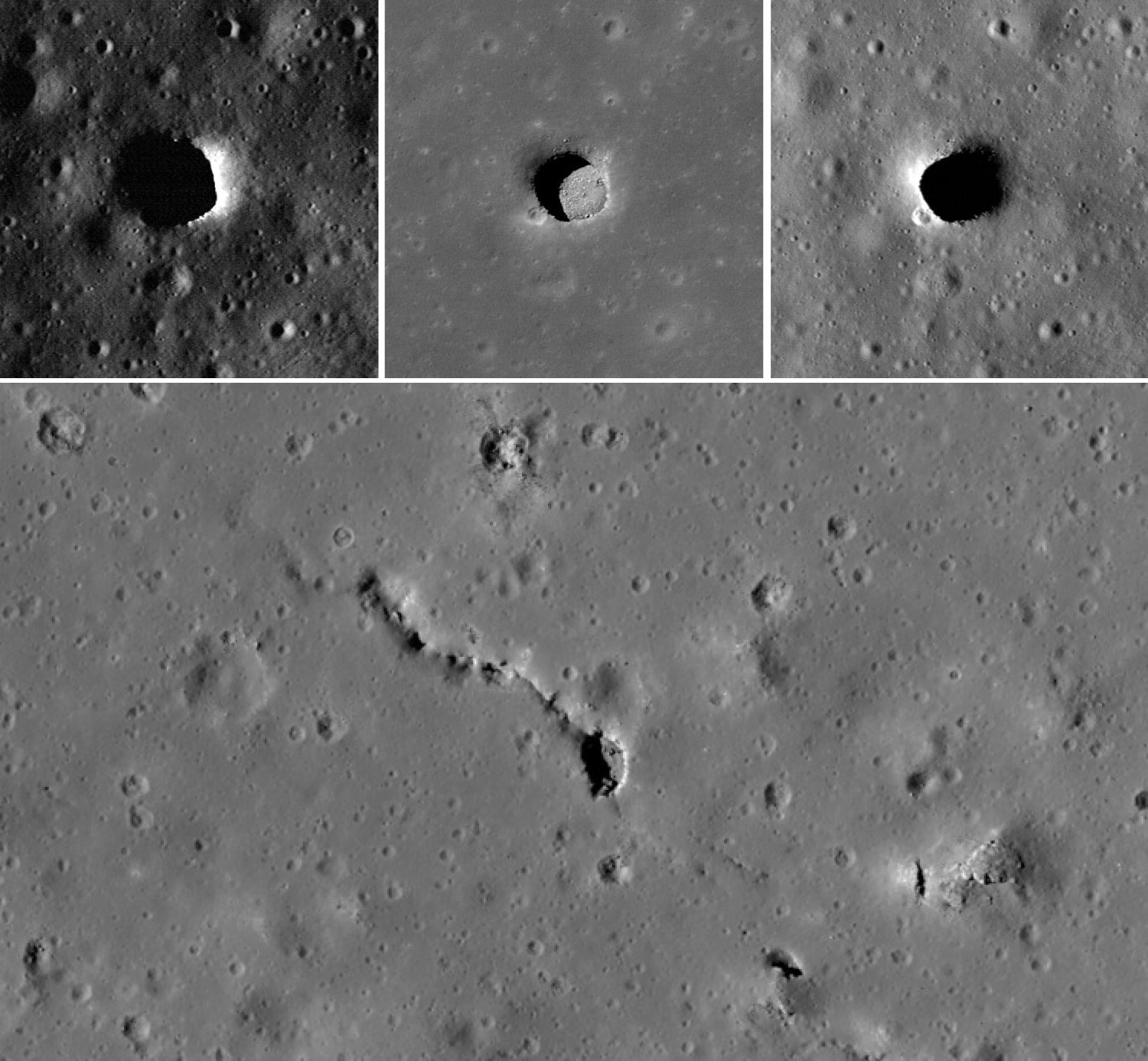Cave Detection and Mapping: Nasa Moon Caves

NASA employs advanced technologies to detect and map lunar caves, which provide valuable insights into the Moon’s geological history and potential for future exploration.
One method involves analyzing high-resolution images captured by lunar orbiters, such as the Lunar Reconnaissance Orbiter (LRO). These images reveal subtle surface features that may indicate the presence of caves, such as collapsed sinkholes or shadows cast by cave entrances.
Another technique utilizes laser altimetry, which measures the distance between a spacecraft and the lunar surface using lasers. By analyzing the reflected laser pulses, scientists can create detailed topographic maps that identify depressions or other features suggestive of caves.
Once potential caves are identified, NASA deploys rovers and other instruments for further exploration. Rovers equipped with cameras and sensors navigate the lunar terrain, capturing images and collecting data on the cave’s interior. These instruments include lidar systems that emit laser pulses to map the cave’s structure and dimensions.
Navigating and mapping caves in the lunar environment poses unique challenges. The Moon’s low gravity and extreme temperature variations can affect the performance of instruments and the stability of cave structures. Additionally, the lack of an atmosphere means that caves are exposed to constant bombardment by cosmic radiation and micrometeoroids, which can damage equipment and alter the cave’s interior.
Despite these challenges, NASA’s cave detection and mapping efforts have yielded significant discoveries. In 2009, the LRO identified several potential caves in the Moon’s Mare Tranquillitatis region, where the Apollo 11 mission landed. Subsequent rover missions have confirmed the existence of these caves and provided valuable data on their structure and composition.
Cave Habitability and Potential for Life

Nasa moon caves – Lunar caves, with their unique and potentially stable environmental conditions, have sparked interest in their potential to support life or preserve evidence of past life. Understanding the habitability of lunar caves is crucial for future exploration and the search for extraterrestrial life.
Environmental Conditions
Lunar caves offer several environmental conditions that could potentially support life or preserve evidence of it. These include:
- Shielding from radiation: Caves provide protection from harmful radiation, such as cosmic rays and solar flares, which can damage organic molecules.
- Stable temperature: Caves can maintain relatively stable temperatures throughout the lunar day and night, providing a more habitable environment compared to the extreme temperature fluctuations on the lunar surface.
- Water availability: While the Moon is generally considered dry, water ice has been detected in permanently shadowed regions of polar craters. Caves could potentially trap and store water ice, providing a source of water for any life forms.
Evidence of Past Life, Nasa moon caves
Lunar caves could also potentially preserve evidence of past life, even if life no longer exists on the Moon. Caves can act as natural archives, protecting organic molecules and other biosignatures from degradation over time.
- Organic molecules: Organic molecules are the building blocks of life. Caves could potentially contain organic molecules that were deposited by ancient life forms or carried by meteorites.
- Biosignatures: Biosignatures are chemical or physical indicators of past life. Caves could preserve biosignatures, such as fossilized microorganisms or evidence of biological activity.
Research and Experiments
Several experiments and research projects have been conducted to investigate the possibility of life in lunar caves. These include:
- Moon Mineralogy Mapper (M3): The M3 instrument on the Chandrayaan-1 spacecraft detected water ice in permanently shadowed regions of the Moon, suggesting the potential for water availability in lunar caves.
- Lunar Reconnaissance Orbiter (LRO): The LRO has mapped the Moon’s surface, identifying potential cave entrances and providing data on their environmental conditions.
- Lunar Exploration Neutron Detector (LEND): The LEND instrument on the Lunar Prospector spacecraft detected elevated levels of hydrogen in polar regions, indicating the presence of water ice.
NASA’s moon caves, enigmatic and potentially harboring life, have long captivated scientists and explorers alike. Enter Elon Musk , the visionary entrepreneur who envisions establishing a permanent human presence on the Moon. His ambitious plans include utilizing these caves as shelters, research stations, and even potential habitats for future lunar colonists.
As NASA continues to unravel the secrets of the Moon, Musk’s vision may one day turn these subterranean wonders into a thriving hub of human exploration.
NASA’s moon caves, hidden beneath the lunar surface, remain enigmatic and alluring. Their exploration promises tantalizing insights into the moon’s geological history. However, these caves are not without their allure, reminding us of the irresistible allure of Krispy Kreme’s Paris doughnuts , a culinary masterpiece that transcends time and continents.
Just as these doughnuts captivate our taste buds, the moon caves beckon us with their promise of scientific discovery.